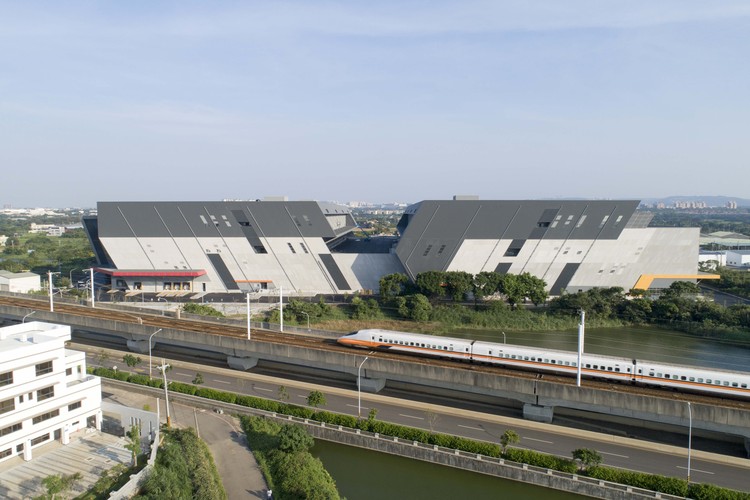317 Social Housing Units SV60
2016-02-23 03:00
架构师提供的文本描述。鉴于旨在以当代态度和对当前社会趋势敏感的态度提供补贴住房的倡议的独特性,采取了一项综合战略,其基础是对场所的解释和基于改善生活条件和程序的类型学研究,以产生可持续的高质量住房,并适应影响建筑概念建设的各种考虑因素。
Text description provided by the architects. Given the uniqueness of the initiative designed to provide subsidised housing based on an attitude that is contemporary and sensitive to current social trends, a comprehensive strategy has been adopted based on an interpretation of the PLACE and typological research based on improving living conditions and processes in order to give rise to quality housing that is sustainable and adapted to the various considerations that influence the construction of the architectural concept.
我们把这个地方理解为是局势、要素或事件的累加器,这些情况、要素或事件是建立在一个基于广泛和复杂的愿景的基础上的,它确立了超越严格的视觉或物理价值的承认准则。我们所设想的地方,除了已经确立的某些财产开发模式之外,还有风、光、可展空间、居民的未来记忆。
We understand the place as being an accumulator of situations, elements or events that are built as a single concept based on a broad and complex vision that establishes guidelines for recognition that go beyond the strictly visual or physical values. The place we envisage has wind, light, malleable spaces, the future memory of the inhabitants, in addition to certain property development patterns that are already established.
在这一解释的基础上,提出了一项干预措施,以适应与该地点有关的情况,并试图将其本身整合为一个抽象的要素,通过一种支配整个业务的几何模式加以叠加。这一框架使我们能够精简与该项目有关的所有因素,以便提出一种在建筑和城市设计方面都是统一的总体办法。
Based on this interpretation, an intervention is proposed that is tailored to the circumstances pertaining to the place and attempts to integrate itself as an abstract element superimposed by means of a geometric pattern that governs the entire operation. This framework allows us to streamline all the factors pertaining to the project in order to propose an overall approach that is unitary both in terms of construction and urban design.
我们发挥了一系列的参数,目的是创造一个独立的碎片的城市,重建感知的本质与对地方本身的理解。空空间、广场、街道、有利点和庭院被配置为基本元素,以定义我们新的“邻里”。
We bring into play a range of parameters aimed at creating an independent fragment of a city that reconstructs perceptive essences associated with an understanding of the place itself. Empty spaces, squares, streets, vantage points and courtyards are configured as basic elements in order to define our new "neighbourhood."
由于地块的斜坡陡峭(相距40米),建议修订地形图,在几何架构内加入一系列露台,斜坡约为5米,各建筑物均会在该等斜坡上站立。这些楼宇会适应不同的斜坡,采用缠绕模式,以寻求更佳的方向,并向南向北扩展(与大部份楼宇的方向一致)。此外,当局亦会就邻近街道作出这项安排,以便行人可进入地块的多个地点。这些建筑物的建造方式比它们自己的或独立的形式更重视空旷空间及其与地形的关系。
Due to the sharp slope of the plot (40 metres of height difference), the proposal is to amend the topography by means of a series of terraces integrated into the geometric framework, with slopes of approximately 5 metres, and on which the various buildings will stand. These buildings will adapt to the different slopes, adopting a winding pattern to seek better orientations and spread out in a south to north direction (which corresponds to the orientation of most of the blocks). In addition, this arrangement will occur in relation to the adjacent streets in order to allow pedestrian access to various points on the plot. The buildings are proposed in a way that gives greater importance to the empty space and to their relationship with the terrain than to their own or independent form.
计划在纳入317套补贴住房(32,742.46平方米)的基础上,实施混合(多数为住宅)方案。在地块不同部分(2,472.49平方米)战略性地分布的各种商业房舍(2,472.49平方米)。(共达米),并提供必要的停车位,这些停车位与地下室楼层的每一栋楼有关的交错布局中的每一栋楼都有可用的停车位。
A mixed (mostly residential) programme is envisaged based on the inclusion of 317 subsidised dwellings (32,742.46 sq. metres) and various commercial premises that are strategically distributed around different parts of the plot (2,472.49 sq. metres in total), together with the necessary provision of parking spaces that are available associated with each building in the basement floors that occur in the staggered layout.
从外部对该项目的看法来看,该项目的目的是保持空间的连续性和错开的安排,使地面成为可以行走的覆盖区域,并有可能在各种地块周围移动,成为广场、有利点、街道等城市情况下的街区。发生,给整个项目的质量,更多地取决于其居民的生活,而不是建筑。(鼓掌)
The aim, from the external perception of the project, is for the continuity of space, and the staggered arrangement, with the ground floors that become covered areas that can be walked under, and the possibility of moving around the various plots as a neighbourhood where urban situations such as squares, vantage points, streets, etc. occur, gives the whole project qualities that depend more on the life of its inhabitants than on the architecture.
这个想法是一种建筑模式,旨在通过使用优化使用条件和节约能源的系统来提高生活质量,并在可能的情况下鼓励使用该地区自己的自然资源。太阳落在立面上的程度取决于朝向(南北),并由“深面”系统控制(其深度因方位而异,向南较深,向北较小),从而确保夏季阳光不会直接影响住所内部,从而保持较好的气候条件,而在冬天(当太阳较低的时候),直接照耀在房间里加热。提出了一种交叉通风系统,因为所有的住宅都有双重方向.该系统是建立在一个内部庭院连接到外面的梯田,改变他们的方向,以改善空气流通,并保持住宅持续通风。
The idea is a building model that aims to improve the quality of life by using systems that optimise the conditions of use and energy saving, encouraging wherever possible the use of the area's own natural resources. The degree to which the sun falls on the façades depends on the orientation (north-south) and is controlled by means of a "deep façade" system (whose depth varies depending on the orientation, deeper to the south and less so to the north), thereby ensuring that in summer the sunlight does not directly impact the inside of the dwellings, thus maintaining better climate conditions, and in winter (when the sun is lower), shining in directly to heat the rooms. A cross-ventilation system is proposed, since all the dwellings have double orientation. This system is based on an inner courtyard connected to the outside by terraces that change their orientation to improve air circulation and keep the homes continually ventil
Architect in Charge Antonio G. Liñán
Project Team Luis E. Villar, Víctor Silveira, Esteban Valencia, Mª Luz Villar, Daniel Montes, Jose G. Mora, Sara Speranza
Photographs Jesús Granada
 举报
举报
别默默的看了,快登录帮我评论一下吧!:)
注册
登录
更多评论
相关文章
-

描边风设计中,最容易犯的8种问题分析
2018年走过了四分之一,LOGO设计趋势也清晰了LOGO设计
-

描边风设计中,最容易犯的8种问题分析
2018年走过了四分之一,LOGO设计趋势也清晰了LOGO设计
-

描边风设计中,最容易犯的8种问题分析
2018年走过了四分之一,LOGO设计趋势也清晰了LOGO设计

























































































